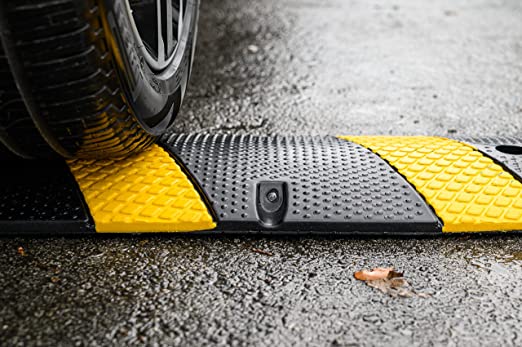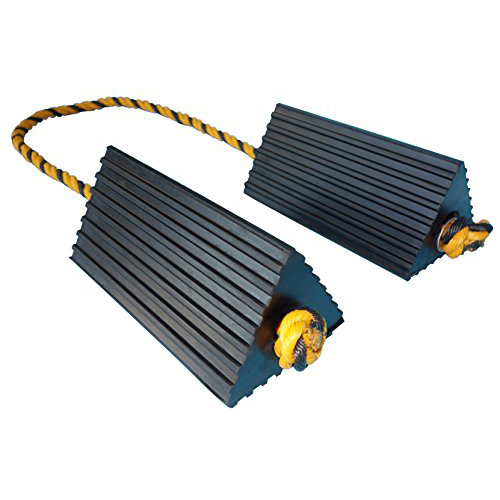Introduction
Explanation of speed bumps and speed humps
Speed bumps and speed humps are two common traffic calming measures used to reduce vehicle speeds on roads. Speed bumps are typically shorter and steeper than speed humps, with a height of 3-4 inches and a length of 10-14 feet. They are designed to slow down vehicles to a speed of 5-10 mph. On the other hand, speed humps are longer and flatter, with a height of 3-4 inches and a length of 22-24 feet. They are designed to slow down vehicles to a speed of 15-20 mph. Both speed bumps and speed humps are effective in reducing vehicle speeds, but their suitability depends on the road type, traffic volume, and speed limit.
Importance of traffic calming measures in New York
Traffic calming measures are of utmost importance in New York, a city that is known for its bustling streets and heavy traffic. The implementation of these measures is crucial in ensuring the safety of pedestrians, cyclists, and motorists alike. With the increasing number of accidents and fatalities on the roads, it is imperative that the city takes proactive steps to address this issue. Speed bumps and speed humps are two effective traffic calming measures that can be used to slow down vehicles and reduce the risk of accidents. By choosing the right measure for each location, the city can create safer and more livable streets for all.
Purpose of the article
The purpose of this article is to explore the differences between speed bumps and speed humps and determine which option is better suited for New York roads. While both options are designed to slow down drivers and improve safety, there are distinct differences in their design and effectiveness. By examining the pros and cons of each option, we hope to provide valuable insights for city officials and residents who are looking to implement traffic calming measures in their communities.
Speed Bumps
Definition and characteristics
Speed bumps and speed humps are two common traffic calming measures used on roads to reduce vehicle speeds. Speed bumps are typically higher and more abrupt than speed humps, with a height of 3-4 inches and a length of 12-14 feet. They are designed to force drivers to slow down to a speed of 5-10 mph. On the other hand, speed humps are longer and flatter, with a height of 2-3 inches and a length of 22-24 feet. They are designed to encourage drivers to slow down to a speed of 15-20 mph. Both speed bumps and speed humps are effective in reducing vehicle speeds, but the choice between the two depends on the specific road conditions and traffic patterns.
Advantages of speed bumps
Speed bumps have several advantages over speed humps. Firstly, they are more effective at slowing down vehicles as they have a steeper incline and a sharper edge. This means that drivers are forced to slow down to a near-stop in order to navigate over the bump. Secondly, speed bumps are more visible to drivers, making them a better option for areas with heavy traffic or poor lighting. Additionally, speed bumps are easier to install and maintain than speed humps, as they require less space and can be made from a variety of materials. Finally, speed bumps are more effective at reducing the speed of larger vehicles such as trucks and buses, which may not be affected by speed humps. Overall, speed bumps are a practical and effective solution for controlling speed on New York roads.
Disadvantages of speed bumps
Despite the benefits of speed bumps, there are also some disadvantages to consider. One of the main drawbacks is that they can cause discomfort and even pain for drivers and passengers if they are not taken at the appropriate speed. This can be especially problematic for emergency vehicles, which need to respond quickly to calls. Additionally, speed bumps can increase noise pollution in residential areas, as drivers may need to accelerate and decelerate more frequently. Finally, speed bumps can be costly to install and maintain, which may be a concern for municipalities with limited budgets.
Examples of speed bump installations in New York
Speed bumps have been installed in various locations throughout New York City to help control speeding and improve safety for pedestrians and drivers alike. Some examples of speed bump installations in the city include those found on residential streets in neighborhoods such as Park Slope, Brooklyn and Jackson Heights, Queens. Additionally, speed bumps have been installed near schools and parks to help protect children and other vulnerable populations. While speed bumps have been effective in reducing speeds in certain areas, some argue that they can also cause discomfort for drivers and damage to vehicles if not properly maintained.
Speed Humps
Definition and characteristics
Speed bumps and speed humps are two common traffic calming measures used on roads to reduce the speed of vehicles. Speed bumps New York are typically taller and more abrupt than speed humps, with a height of 3-4 inches and a length of 12-14 feet. They are designed to force drivers to slow down to a speed of 5-10 mph. On the other hand, speed humps are longer and flatter, with a height of 2-3 inches and a length of 22-24 feet. They are designed to encourage drivers to slow down to a speed of 15-20 mph. Both speed bumps and speed humps can be made of various materials, including asphalt, concrete, or rubber. However, the choice between speed bumps and speed humps depends on the specific needs of the road and the surrounding community.
Advantages of speed humps
Speed humps have several advantages over speed bumps. Firstly, they are longer and flatter, which means that they are less jarring to vehicles and their occupants. This makes them a better option for roads with higher traffic volumes and speeds. Additionally, speed humps are designed to slow down vehicles gradually, which reduces the risk of sudden stops and starts that can cause accidents. Finally, speed humps are more effective at reducing overall speeds, as they force drivers to slow down for a longer period of time. This makes them a great option for residential areas and school zones, where safety is a top priority. Overall, speed humps offer a more comfortable and effective solution for controlling speed on New York roads.
Disadvantages of speed humps
Despite the advantages of speed humps, there are also some disadvantages that need to be considered. One of the main drawbacks is that they can cause discomfort and inconvenience for drivers and passengers, especially if they are not properly designed or maintained. Speed humps can also increase noise pollution and air pollution due to the acceleration and deceleration of vehicles. Additionally, emergency vehicles such as ambulances and fire trucks may have difficulty navigating over speed humps, which can delay response times and potentially endanger lives. Finally, speed humps may not be suitable for high-speed roads or areas with heavy traffic flow, as they can cause congestion and increase travel times.
Examples of speed hump installations in New York
Speed humps have become increasingly popular in New York City as a traffic calming measure. One example of a successful installation is on 20th Street in Park Slope, Brooklyn. The humps were installed after residents complained about speeding and reckless driving on the residential street. The humps have been effective in slowing down traffic and making the street safer for pedestrians and cyclists. Another example is on 111th Street in Corona, Queens. The humps were installed as part of the city’s Vision Zero initiative to reduce traffic fatalities. The humps have been successful in reducing speeds and improving safety on the busy street. Overall, speed humps have proven to be an effective tool for traffic calming in New York City.
Comparison
Criteria for comparison
When comparing speed bumps and speed humps, there are several criteria that must be taken into consideration. The first is the intended purpose of the traffic calming measure. Speed bumps are typically used in areas where the speed limit is very low, such as parking lots or residential streets. Speed humps, on the other hand, are designed for use on roads with higher speed limits, such as arterial roads or collector streets. Other factors that must be considered include the cost of installation and maintenance, the impact on emergency vehicles, and the potential for noise and vibration. Ultimately, the choice between speed bumps and speed humps will depend on the specific needs of the community and the road in question.
Effectiveness in reducing speed
When it comes to reducing speed, both speed bumps and speed humps are effective in their own ways. Speed bumps are more aggressive and can slow down vehicles to a complete stop, making them ideal for areas with high pedestrian traffic or where speed limits are very low. On the other hand, speed humps are gentler and can reduce speed without causing discomfort to drivers or passengers. They are better suited for areas where speed limits are slightly higher and where traffic flow needs to be maintained. Ultimately, the effectiveness of either option depends on the specific needs of the road and the surrounding area.
Impact on emergency vehicles
Impact on emergency vehicles: One of the major concerns with speed bumps and speed humps is their impact on emergency vehicles. Speed bumps can slow down emergency vehicles, which can be detrimental in life-threatening situations. On the other hand, speed humps are designed to allow emergency vehicles to pass over them at a higher speed without causing any damage to the vehicle or compromising safety. Therefore, speed humps are a better option for New York roads as they ensure the safety of emergency vehicles while also controlling speed. However, it is important to note that emergency vehicles should still exercise caution when passing over speed humps to avoid any accidents.
Cost and maintenance
When it comes to cost and maintenance, speed humps are generally more expensive to install than speed bumps. This is because speed humps are larger and require more materials and labor to construct. However, speed humps are also more durable and require less maintenance over time. Speed bumps, on the other hand, may need to be replaced more frequently due to wear and tear. Additionally, speed bumps can be more costly to maintain because they can cause damage to vehicles if they are not properly maintained. Ultimately, the decision between speed bumps and speed humps will depend on the specific needs and budget of each individual road or community.
Community feedback
Community feedback is an important aspect to consider when deciding between speed bumps and speed humps for New York roads. Some residents prefer speed bumps as they are more effective at slowing down traffic, while others prefer speed humps as they are less jarring and can be more easily navigated by emergency vehicles. It is important for local officials to gather input from the community and weigh the pros and cons of each option before making a decision. Ultimately, the chosen solution should prioritize safety for both drivers and pedestrians while also taking into account the needs and preferences of the community.
Recommendation for New York roads
After analyzing the pros and cons of both speed bumps and speed humps, it is recommended that New York roads implement speed humps. While speed bumps are effective in slowing down vehicles, they can also cause discomfort and potential damage to vehicles. Speed humps, on the other hand, are designed to slow down vehicles without causing as much discomfort or damage. Additionally, speed humps are more cost-effective and easier to maintain in the long run. Overall, speed humps provide a safer and more efficient solution for controlling speed on New York roads.
Conclusion
Summary of findings
In summary, both speed bumps and speed humps have their advantages and disadvantages when it comes to traffic calming measures on New York roads. Speed bumps are effective at slowing down vehicles to a complete stop, but can be jarring and uncomfortable for drivers and passengers. Speed humps, on the other hand, are more gradual and less disruptive, but may not be as effective at reducing speed. Ultimately, the choice between speed bumps and speed humps will depend on the specific road and traffic conditions, as well as the preferences of local residents and officials.
Final recommendation
After analyzing the pros and cons of both speed bumps and speed humps, it is recommended that New York roads implement speed humps. While speed bumps are effective at slowing down vehicles, they can also cause damage to cars and create noise pollution. Speed humps, on the other hand, are designed to slow down vehicles without causing as much disruption to drivers or their vehicles. Additionally, speed humps are more cost-effective and easier to install than speed bumps. Overall, speed humps provide a safer and more practical solution for New York roads.




